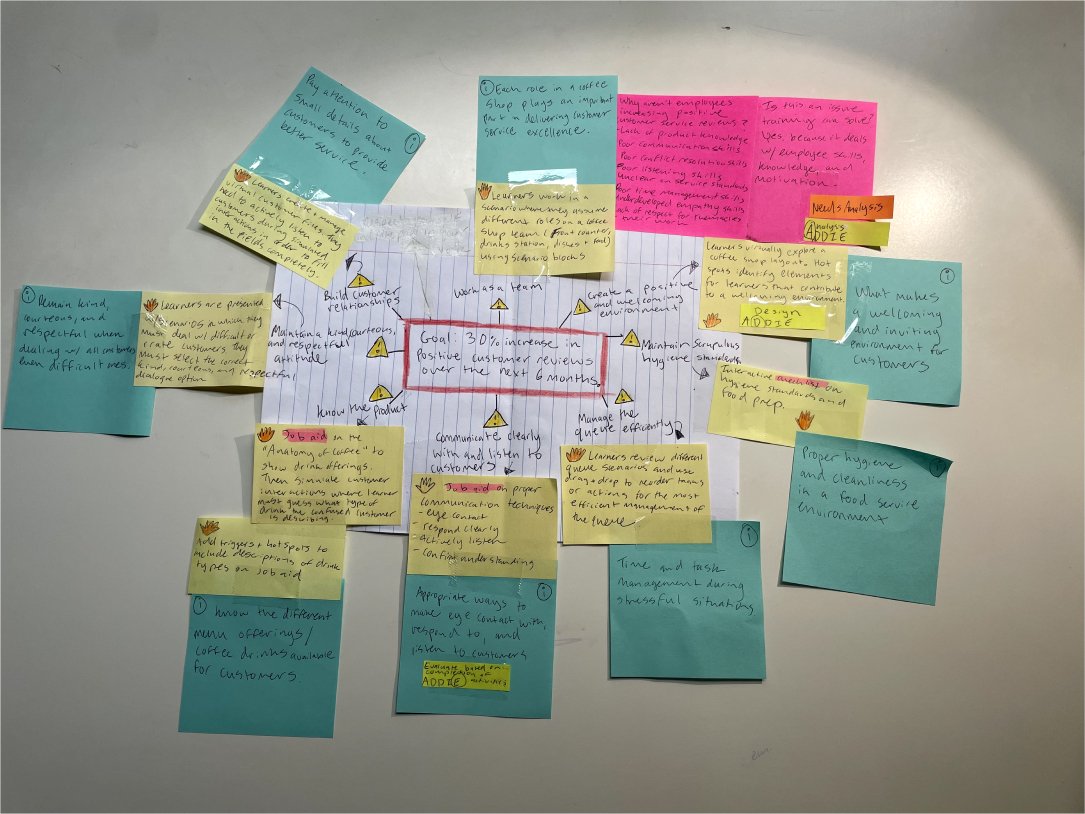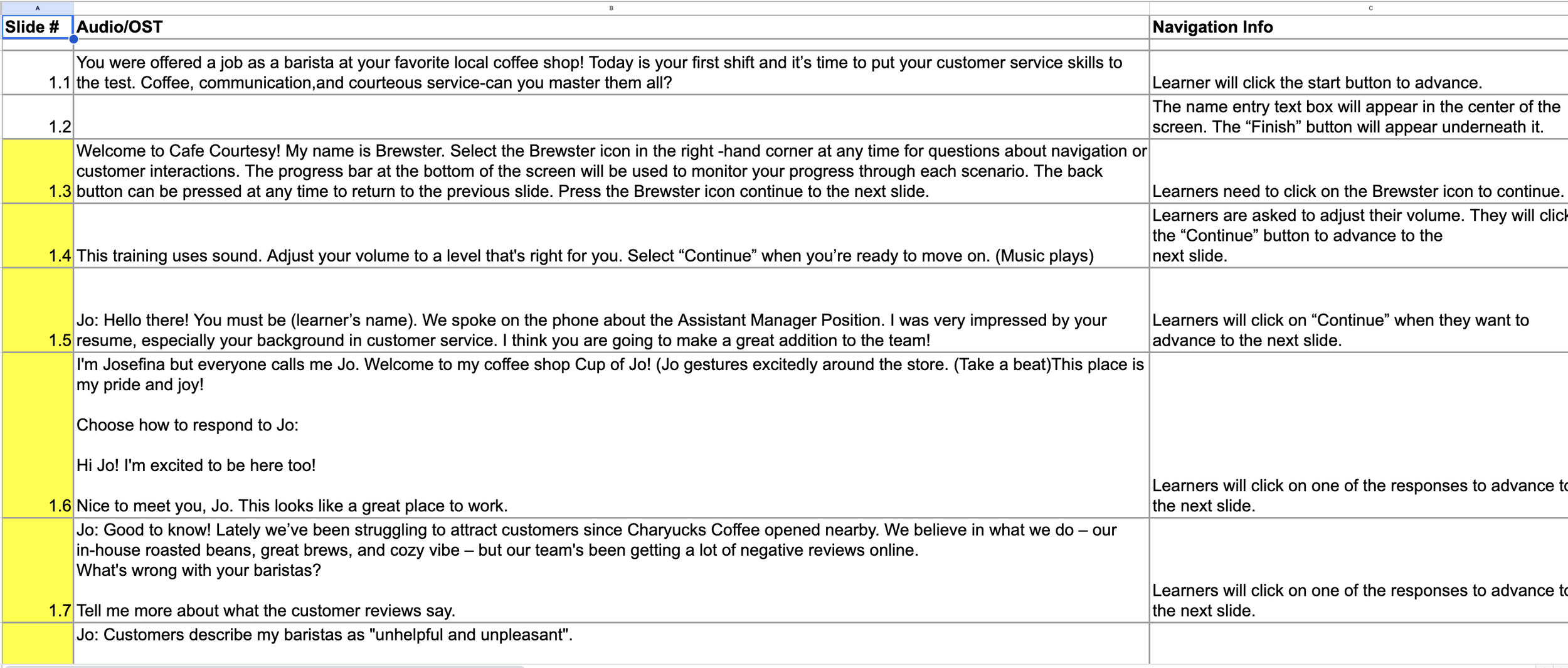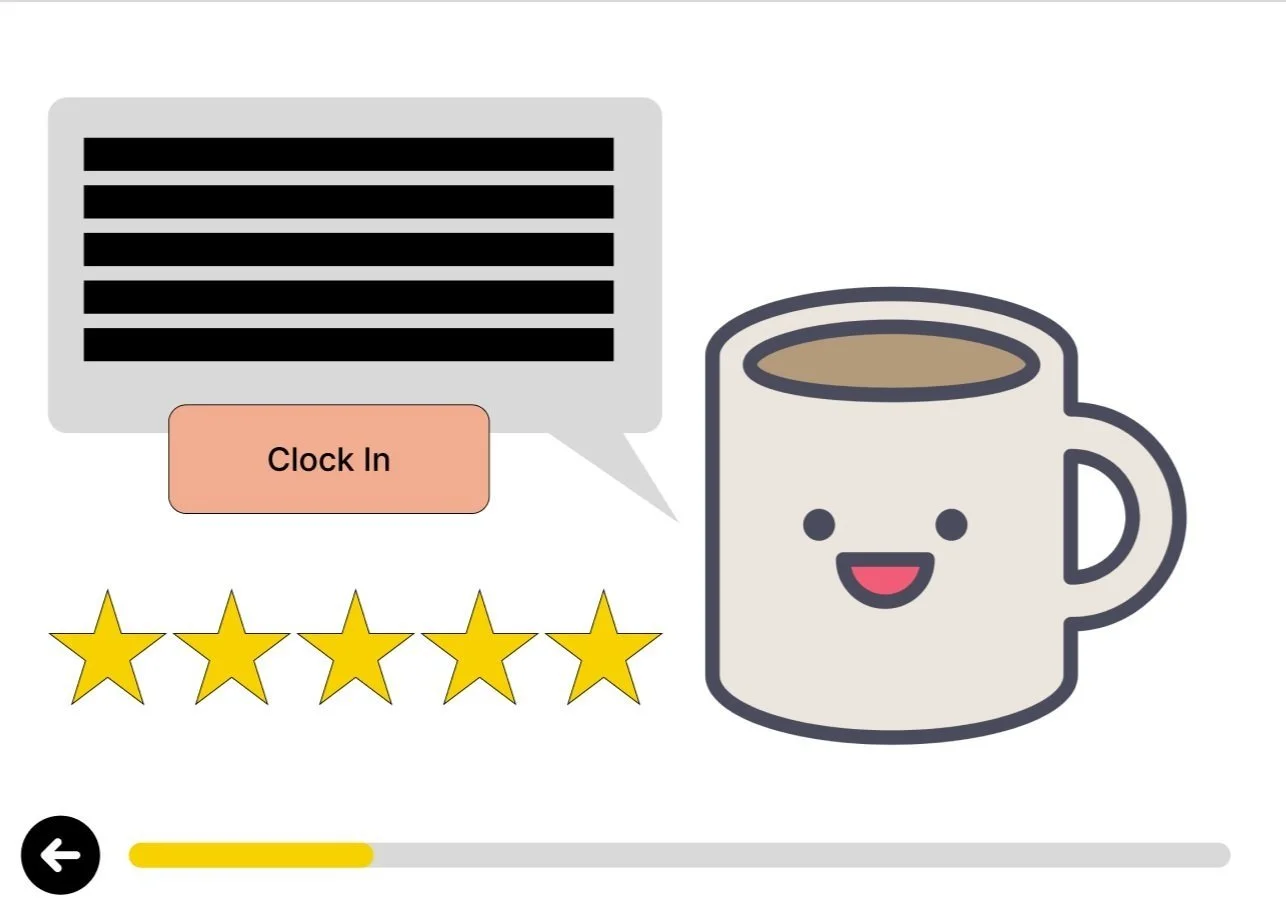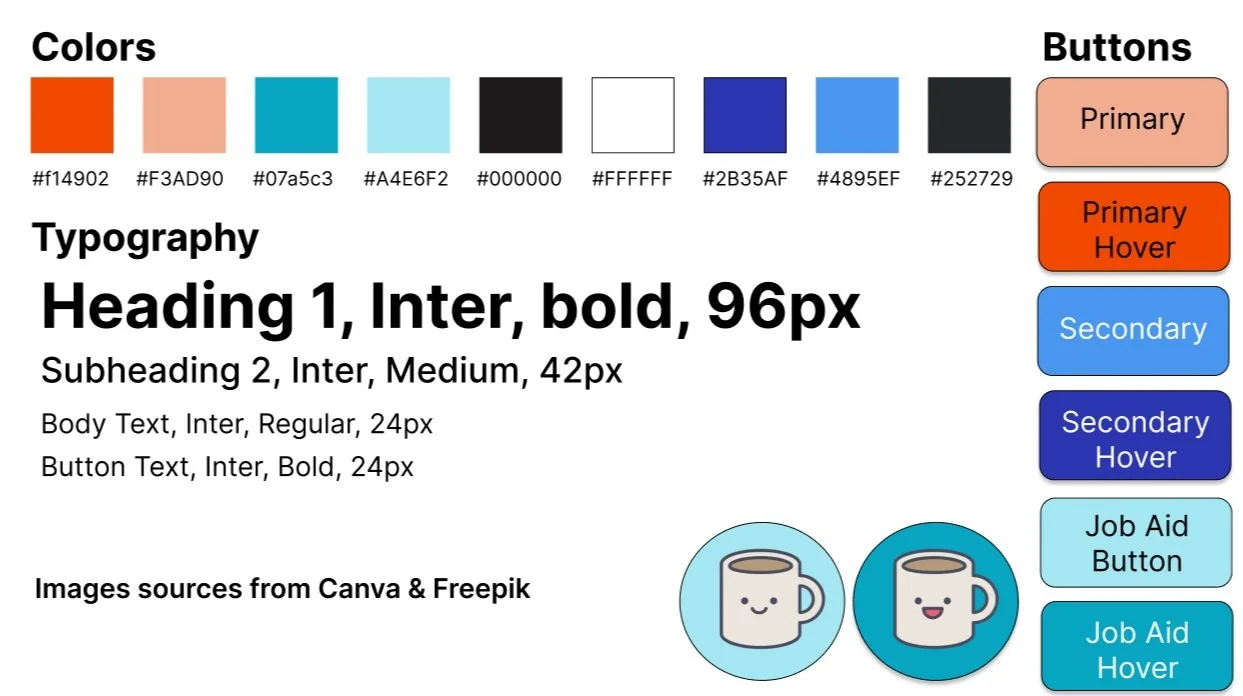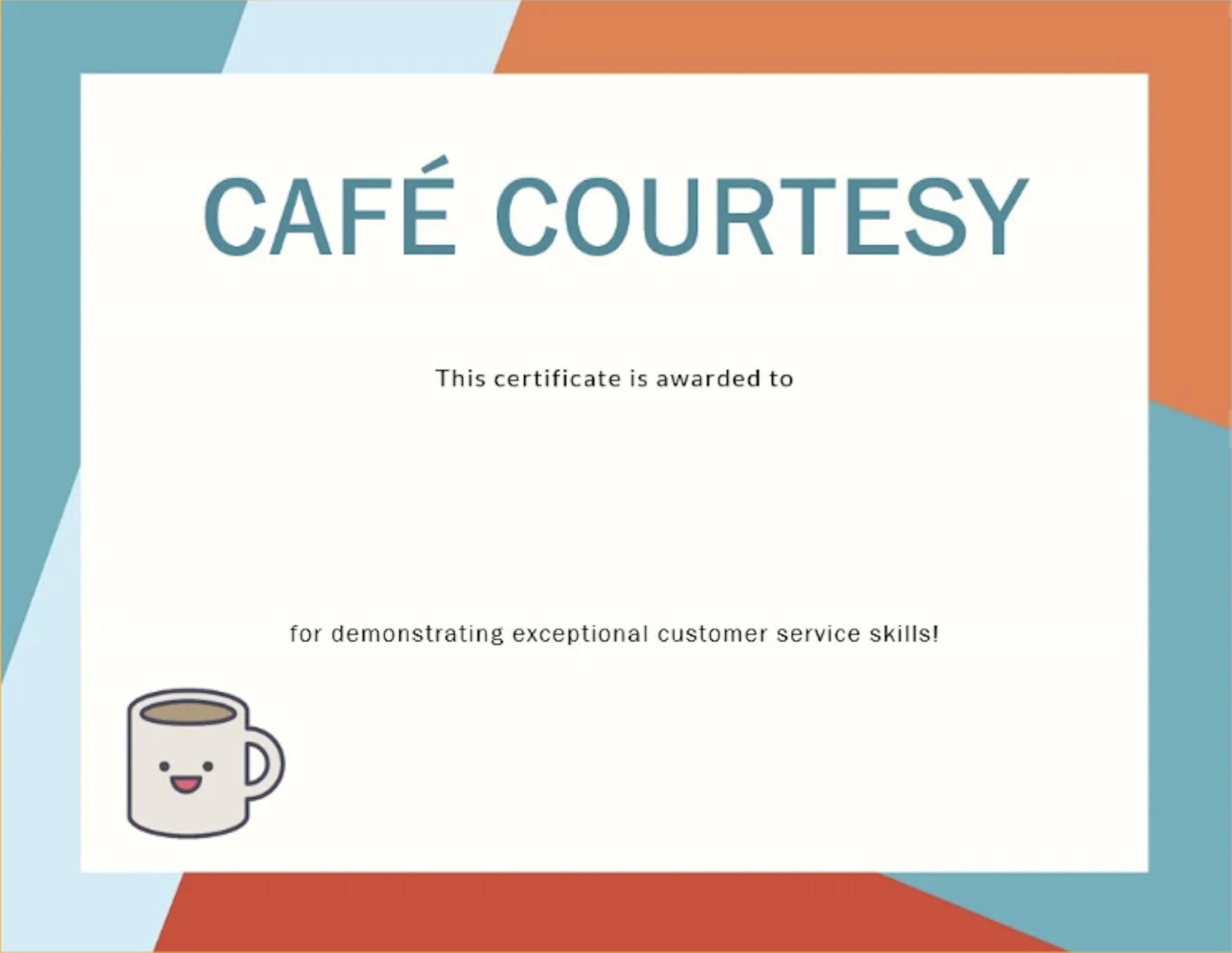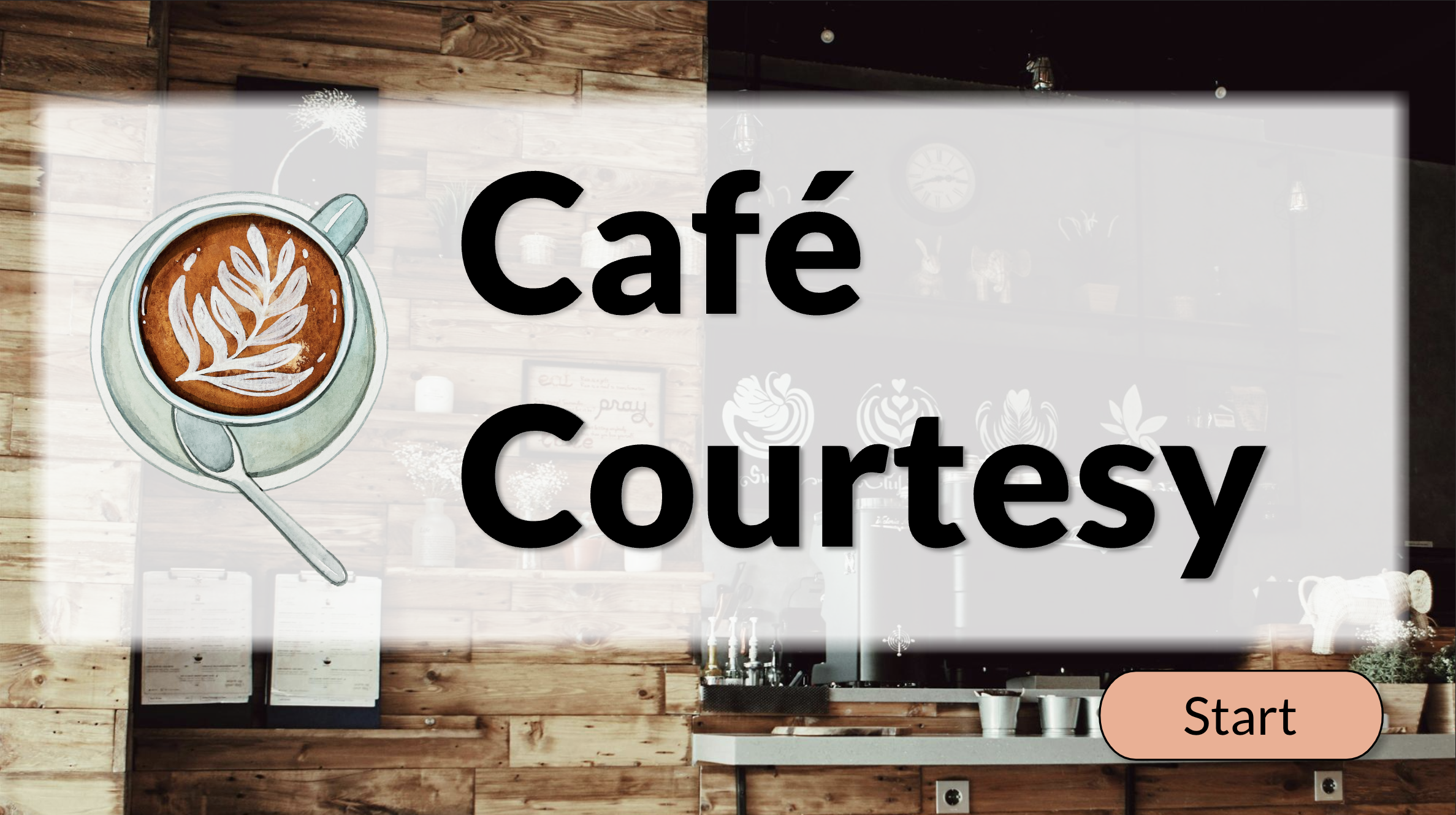
A scenario-based eLearning experience focused on helping new hires develop essential customer service skills.
Audience: New hires or existing staff in need of training in the cafe or service industry setting.
Tools: Articulate Storyline 360, Figma, Canva, Freepik, Vyond, Google Suite, Mindmeister
Course Duration: 45 minutes
By the end of the training, learners will have demonstrated customer service excellence by:
Maintaining an empathetic attitude towards customers.
Illustrating product knowledge through understanding of different coffee drink offerings.
Building positive relationships with customers through friendly rapport.
The Problem
Customers at Cup of Jo, expect both high-quality coffee and excellent customer service. Baristas struggled to meet this demand, often focusing only on product quality. As a result, negative reviews regarding the staff’s customer service abilities increased.
The Solution
Train baristas on high-quality customer service techniques using realistic workplace scenarios to improve service quality and customer satisfaction.
The Process
Guided by Cathy Moore's Map It and the Backwards Design approach, l began the design process by creating an action map. This map identified the eLearning goal and outlined the actions learners needed to demonstrate to achieve that goal. To ensure the implementation of best learning practices, l incorporated insights from instructional strategies such as Gagne's Nine Events, ADDIE, Mayer's Multimedia Principles, and SAM.
Action Map
As the Subject Matter Expert for this project, drawing on my experience as a shift lead at Sidewinder Coffee, I created an action map using MindMeister. This map outlined the eLearning goal, the desired learner actions, scenarios, and job aids. I distilled these elements into three learning objectives. In the paper-pencil version of the action map, labeled each part with its corresponding step in the ADDIE.
Text-Based Storyboard
l used the action map as a blueprint to design questions, actions, character scripts, and consequences, which I organized into a text-based storyboard. Utilizing the interactive story creation tool Twine, I mapped out a nonlinear storyboard. Drawing from my service industry experience, I developed realistic scenarios, characters, and actions. Initially, l intended for the mentor character to be the manager Manuel. However, later replaced Manuel with a sentient coffee mug named "Brewster" after receiving feedback that it would be best to avoid having a mentor character that rebuked learners.
Low-Fidelity Prototype
With the style guide complete, I developed a low-fidelity prototype in Figma. This prototype outlined slides, button placements, character positions, text locations, and mentor character placement.
High-Fidelity Prototype
The high-fidelity prototype built on the low-fidelity version by incorporating text from the storyboard, color enhancements, and interactive elements based on the Twine paths. This prototype was shared with SMEs and stakeholders for further review and refinement before final production.
Final Product
To ensure the eLearning's visual design was accessible, aesthetically pleasing, and consistent, I created a style guide. I selected color themes for buttons and text baseo on accessibility checker tools to ensure clarity and coherence for all learners.
After receiving feedback and ensuring the project met industry standards, I designed the final eLearning product using Articulate 360. The program features realistic interactive scenarios and character scripts to enrich the training, creating a high-stakes environment that mirrors real-world situations the learner might encounter in the field.
l utilized video animation in Vyond to employ storytelling techniques, capturing the learner' attention right from the start of the eLearning course. In addition to this, I created engaging sound and video animations to transition between slides, notify learners of incorrect or correct actions and consequences after their selection, and to further motivate the learner to partake in the training.
I introduced learners to a mentor character who would provide guidance and feedback throughout the course to enhance understanding, build confidence, and support learner development as they progress through the material.
I designed and added slide layers to job aids in order to make them more interactive and beneficial for learners.
I designed a Storyline based certificate for learners to print after completing the course.

